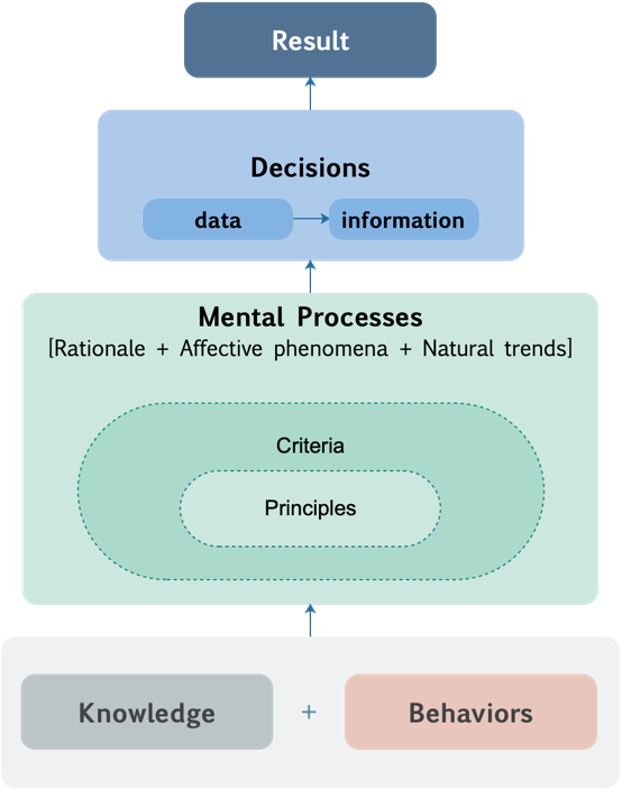
Author: Josep Alzamora
Reflection on Coherence
First Approach
In 2004, coherence was the central theme of my first international conference. In that lecture entitled "Profiting from Coherence," I pointed out coherence as a determining factor for competitiveness, which was defined as "the consistency with which people's behavior and the processes used within an organization are aligned with its concept."
As examples of inconsistency, I mentioned some such as:
-
An organization has implemented a quality system, but none of its key indicators are focused on customer satisfaction.
-
An organization has finished a fantastic new building, but the word “quality” is only applied in the documents, not in people’s behavior.
-
An organization has complete documentation about the policy that must be applied to its human resources, but people there are not motivated.
-
An organization puts a strong emphasis on knowledge management, but a poor training system is implemented.
Of course, the list was infinitely longer at the time and has continued to grow to the present day. It doesn't seem to be of much concern to business owners.
Why is coherence so important?
The first aspect to consider is the effect of incoherence on people’s perception: emotional rejection. Actions contradictory to words or realities different from what was promised generate a feeling of disappointment (emotionally rejected) incompatible with what a brand needs to become a reference and forge robust emotional bonds with customers: employee motivation and customer satisfaction or delight. In short, to be a source of pride.
The second aspect is the magnitude of that issue. The list of inconsistencies is permanent and massive, affecting the business performance in the same way (constantly and enormously).
The First Inconsistency
From the moment a business intends to improve its performance by taking care of the coherence factor, it must consider its basic principle: Something or someone is not inconsistent per se but regarding something else. Thus, we have the more generalized contradiction of saying what we do (or don’t). What we do is not contradictory by itself, but because we said something different.
In transforming businesses, the first inconsistency is to talk about the need for change but act the same way day after day. But why is that?
After more than 20 years of dedication to facilitate transforming the business model, I reached some conclusions:
-
The direct relationship between personal change and business transformation is not fully embraced. Although it may be evident on an intellectual-rational level, our daily actions reflect a constant search for referents and stability. This attitude contradicts the fact that no innovation or transformation process is accompanied by a guarantee certificate of certainty.
As a consequence of this inconsistency, the dynamics of innovation and transformation are far less effective than necessary to compete at the highest level.
-
Even if a person is sure that individual change is necessary for a real business transformation to take place, what exactly would that change consist of? Even if that person accepts that habits and behaviors form the criteria by which decisions are made—fundamental ingredient for results—, what are the behaviors that person should adopt?

It is evident that businesses need a model specifically designed for the result they want to achieve. However, in some environments (certainly the Latino culture is one of them,) working within the framework of a pre-established format feels limiting to personal capabilities. Daily improvisation is not perceived as a risk. Under these circumstances, the effect of the inevitable inconsistencies is not even understood as something negative.
The Need for a Model
The only way to constantly maintain a coherent business dynamics is to develop a specific model for the objective to be achieved and the corporate culture to be developed along the way.
Therefore, once the decision has been made to work within a specific business model framework, the next step is to determine the ultimate goal that the company wishes to achieve. This decision—the final goal—should not be taken lightly. There are several reasons for this, but we could emphasize, in the first place, the fact that an organization (of any type and size) can only have one direction (ultimate goal). But why is that? Why can an organization not adopt its favorite “flavor of the month?” The first reason is that everything a company does in its daily dynamics sends messages to the market that can work as attractors or deterrents of customers. If the company sends contradictory signals, they will generate an emotional rejection effect that will drive customers away. Beyong this, emotional bonding will be not possible.
Furthermore, consider that developing a business model is complex and costly. A company will realize that they cannot introduce variability in the model development process, at least not in its fundamental elements. Otherwise, the effect would be raising the inconsistencies that the company is trying to avoid in the model itself. Thus, once the destination has been decided, the fundamental elements to achieve it must be maintained over a long period, long enough for the market to perceive the coherence between the offer and the actions (e.g., messages, employee behavior,) and the emotional link between the brand and the customer to be strengthened.
Once we have been able to generate a solid emotional brand-customer bond, we will realize that in order to maintain it, it is necessary not to break the coherence we have achieved.
Once a company is certain about what they have to achieve, the next step will be to define the fundamental ingredients to their business model; among others, the behaviors required for the new criteria.